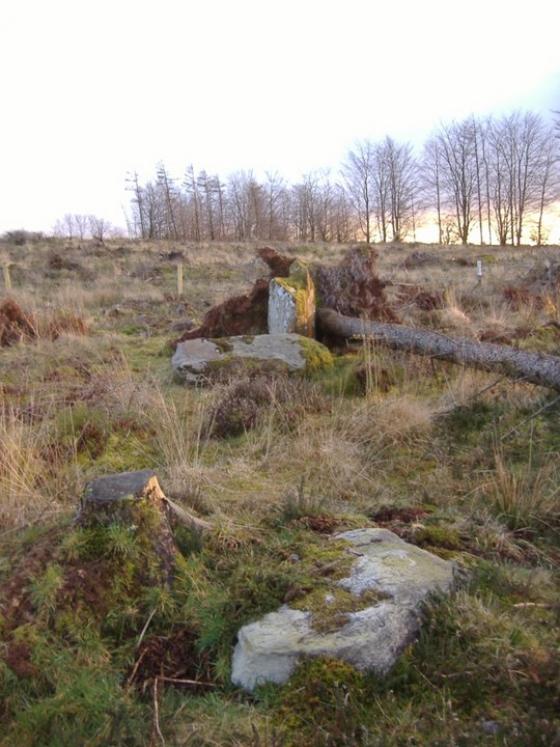Not far distant from Cloyne is Castle Mary, a seat belonging to the Longfield family : it was formerly called Carrig Cotta, which is supposed to be a corruption of Carrig Croith, or the Rock of the Sun,-- a name derived from a cromlech, or Druidical altar, still to be seen not far from the house.
This remain of paganism consists of a rough and massive stone, twelve feet in length; one end elevated about six feet from the ground by two smaller stones, from which its name of Cromlech, signifying a bending or inclined stone, is derived.
Close by it is a smaller stone or altar, supported in a similar diagonal position by a single stone. There is a tradition, that nothing will grow under either of these altars, an opinion that originates from the total absence of verdure, incident to a want of sufficient light and air*.
The top of the larger altar was richly covered with [Wood Geranium], the light feathery leaves and delicate pink blossoms of which formed a pleasing contrast to the solemnity and breadth of the altar.
*oh don’t be so boring. This from the chapter on Cloyne in Thomas Crofton Croker’s ‘Researches in the South of Ireland’ (1828).













